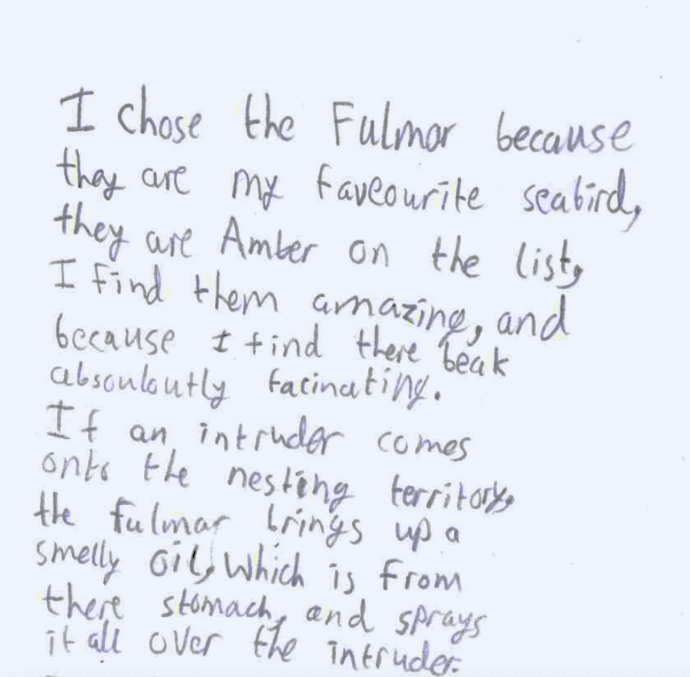Early Adopters Standing Beside House Martins, Otters & Fulmars
Sometimes, caring for nature begins right outside your window.For Penelope, Lilli and Torin, it begins at home in the Scottish Highlands… Penelope stands beside the House Martins When Penelope and her family moved back to Scotland, their new house felt a little cold and lonely: “it had stood empty for some time,” she remembers. But […]
Sometimes, caring for nature begins right outside your window.
For Penelope, Lilli and Torin, it begins at home in the Scottish Highlands…
Penelope stands beside the House Martins
When Penelope and her family moved back to Scotland, their new house felt a little cold and lonely: “it had stood empty for some time,” she remembers. But then, a flutter of wings changed everything.
“There were House Martins, like angels at the windows.”
Each spring, these tiny travellers return all the way from Africa, swooping back to rebuild their nests under the eaves. Penelope watches them arrive in May or June, describing them as “joyous heralds of the light summer days to come.” Beak by beak, they carry mud, rebuilding the homes that wind and winter might have destroyed.
And then, just as suddenly, they’re gone again, the young fledged, the air falling quiet. “We long for their return,” Penelope says. But each year, there are fewer. Insect numbers have plummeted, and the House Martin is now on the Red List for British birds.
So she stands beside them: by keeping her eaves open, by planting for insects, by choosing not to use harmful chemicals. “I hope and pray there isn’t a spring when I stand alone in our garden waiting for the birds that will not return.”
Lilli (aged 13) stands beside the Otters
Lilli writes about otters like she’s seen them in her dreams — half-myth, half-motion:
“The slippery, shy, secretive creatures of the water. They twist and turn through tangles of seaweed in the cold Scottish sea. Myth, magic and reality.”
For Lilli, swimming in a loch is more than just a splash — it’s a way of entering the otters’ world:
“I feel free under the water. More free than I feel on land. That must be how Otters feel when they dive into the cold water when they change from prey to predator. From hunted to hunter. From endangered to dangerous.”
But otters are still under threat. “Endangered because of the poisons we pour into their rivers. Endangered because we found them a nuisance. Endangered because we destroy their homes.”
Lilli’s voice is full of love and determination:
“I can’t bear to see those majestic animals gone. They are part of Scotland. They are part of us.”
Torin (aged 10) stands beside the Fulmars
Torin’s chosen bird isn’t a puffin or an eagle, but the clever, under-sung Fulmar.
“I have chosen the Fulmar because they are my favourite seabird,” he explains.
He’s fascinated by their defence trick: “If an intruder comes onto the nesting territory, the Fulmar brings up a smelly oil from their stomach and sprays it all over the intruder.” Even the chicks know how to protect themselves!
Torin’s also learned how much trouble these birds are in. “They are in trouble because of all the plastic in the sea,” he writes, “and so I want to stand beside them.”
Three voices, one wild home
From the house eaves to the seaweed forests to the cliff-top nests, this family shows what it means to live with the wild. Each of them has found a creature to care about, not out of duty, but out of love and respect.
So here’s to the House Martins, the Otters, and the Fulmars and to Penelope, Lilli and Torin, who remind us that standing beside the beings we share this planet often begins where we are now.
